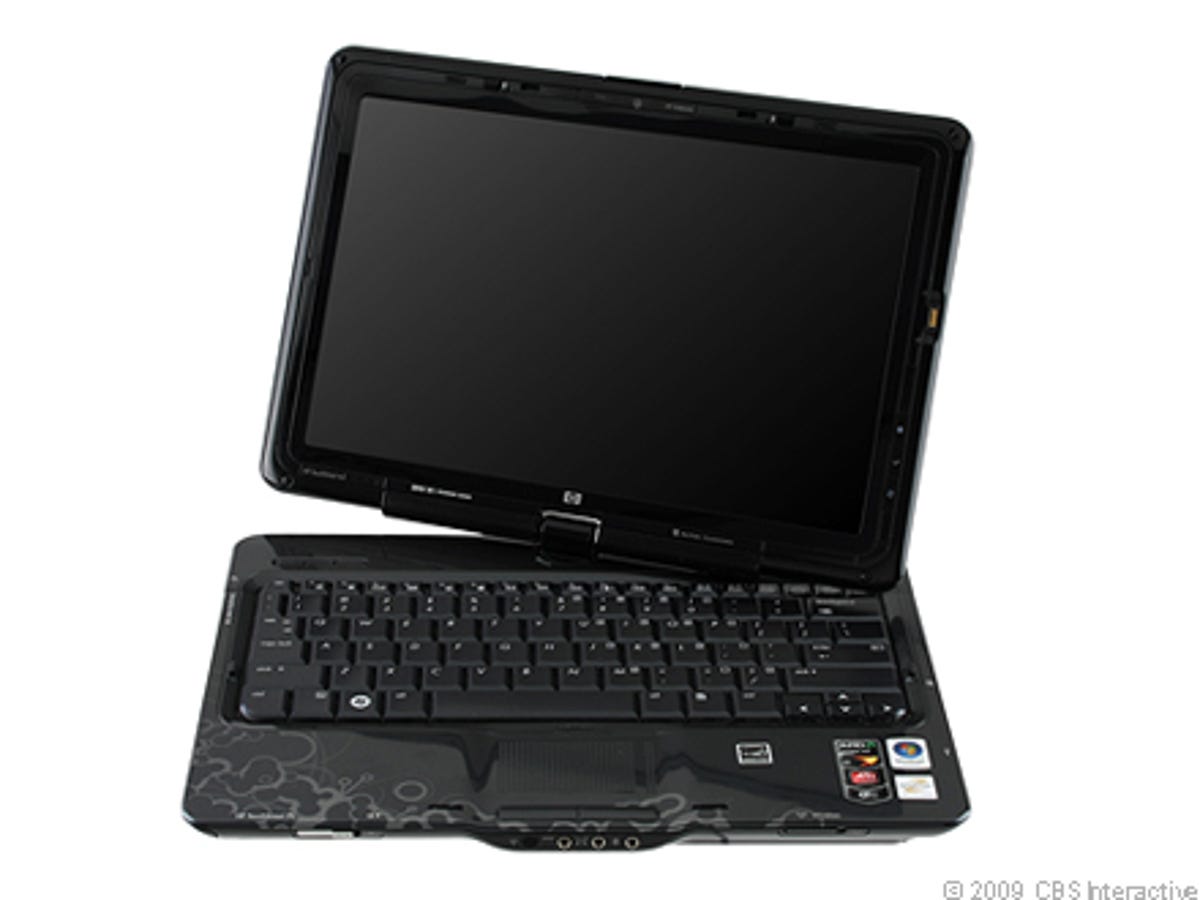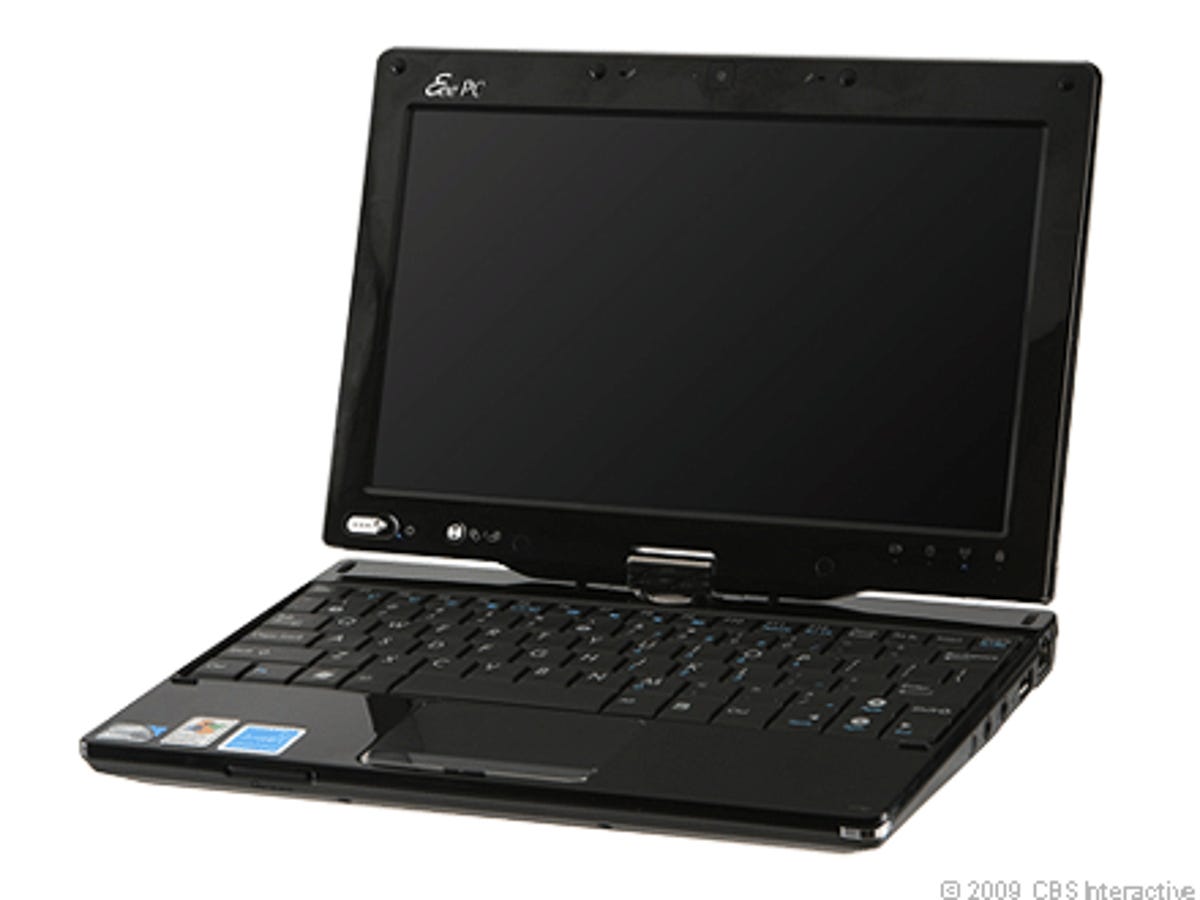Lessons to learn from tablets past (photos)
When Apple reveals its expected tablet Wednesday, we'll see if the company can avoid the biggest pitfalls of this category.

HP tablet
By now, we have a fairly good idea of what to expect from Wednesday's Apple event. It's been all tablet news, all the time for the past week, and through a series of leaks, it's becoming clear what the main focus of the media event will be: a 10-inch touch-screen tablet that costs less than $1,000.
Be sure to check out our live blog of the event here starting a bit before 10 a.m. PST. If CEO Steve Jobs does unveil the much-discussed Apple tablet, it's not likely to be a tablet in the sense of what we've seen from the PC industry in the past decade or so. Here's a look at some of the lessons that can be learned from previous attempts at a tablet for consumers.
Hewlett-Packard, Dell, and other PC manufacturers have been making tablets for a long time. Yet none of them have generated the buzz Apple has in this category. Some recent models, such as this HP Touchsmart tx2 tablet, from PC makers get pretty decent reviews from my colleagues at CNET, but they have yet to really catch on with consumers. The category has been a nonstarter for a long time, and continuing to churn out the same old tablet idea, albeit with updated features like a touch screen and some new touch-friendly applications, isn't going to excite many people.
This is where Apple has a leg up on the competition. Just like with the iPod and the iPhone, Apple didn't invent those categories; it just took something that already existed (MP3 player, smartphone) and improved the experience with good hardware that works in concert with good software. The way iTunes works is what makes the iPod special, and the iPhone OS and App Store are the most innovative parts of the iPhone, so the content and operating system will be the keys to Apple's tablet.

Asus tablet
Asus tried to do something interesting with the tablet. Taking the popular and cheap Netbook concept, and making it a convertible PC with a touch screen, is a decent idea. The Asus Eee PC T91 is small and doesn't cost a lot, but the problem is that it's just a scaled-down version of any number of tablet PCs already out there, though less powerful, thanks to the Atom processor. That keeps the cost down and increases battery life, but that's not been enough to lure mainstream consumers.
Likewise, an Apple tablet can't just be a scaled-down, less expensive version of another kind of computer. The target audience for this already has a laptop--and probably an iPhone. The tablet needs to be a new kind of device that turns our old conceptions of what a tablet does on its head. If Apple is using an iPod-Touch-on-steroids approach, as has been reported, that's good. As Brooke Crothers of the CNET Blog Network pointed out a few months ago, the iPod/iPhone clearly has a design, while smaller than the tablet, that is already working based on the embrace of it by Apple customers and many other similar devices: most Android phones, the Palm Pre, etc.
JooJoo
The JooJoo, formerly known as the CrunchPad, was a good tablet concept, but it fell short. The good things: it's a touch-screen device for watching videos and surfing the Web. The bad: that's basically all it does.
Overall, the Crunchpad/JooJoo offers too limited an experience for too high a price for just those functions. The target was $200 but ended up at well more than $300. At that price, why not just use an iPod or a laptop you already have?
This is where Apple has the right idea: a general-purpose device that does everything media-related the average person could want to do: watch videos, surf the Web, listen to music, read books and magazines, download apps, and even play games. Single-purpose devices that are expensive are a hard sell to a broad group of people, unless there's something completely new and unique about them. A device that does all of the above and has a 3G connection could be on the expensive side, up to $700 or $1,000, some are estimating. But a subsidy through a wireless contract could bring the price down somewhere a bit above an iPhone.
Axiotron Modbook
This is essentially what early fanboy mockups of an Apple tablet looked like. But Axiotron actually went and made it.
The Apple-authorized tablet, which Axiotron made by rebuilding MacBooks it bought from Apple with Wacom pen-computing technology, definitely has a niche audience: there's a really small group of people who want a bulky slate-like device with pen-based entry system. But Axiotron was on to something by putting Mac OS on a tablet; all other tablets are basically Windows machines.
Apple has the industrial-engineering and design resources to take Axiotron's idea and make it light, lean, and much better-looking. Plus, in the age of touch-screen interfaces, there's no need for pen-based entry.
Samsung Q1
The Q1 was part of a category called UMPCs, or ultramobile PCs, that became popular with manufacturers several years ago. Consumers, on the whole, did not share the enthusiasm. While the Q1 is on the smaller side (7 inches), its heft prevented it from being as mobile as the name promised. Apple's tablet should be thin, light, and as portable as possible, if users are expected to make it a media device they can use on the go.
Another problem that Apple can be counted on to avoid Samsung's text entry system. The thumb mouse and split keyboard didn't come across as easy to learn. The tablet Apple is expected to unveil Wednesday will reportedly have a touch text entry system, similar to the virtual keyboard on the iPhone. While that did have a bit of a learning curve, millions of devices sold later; it's clear people are able to grasp it.

